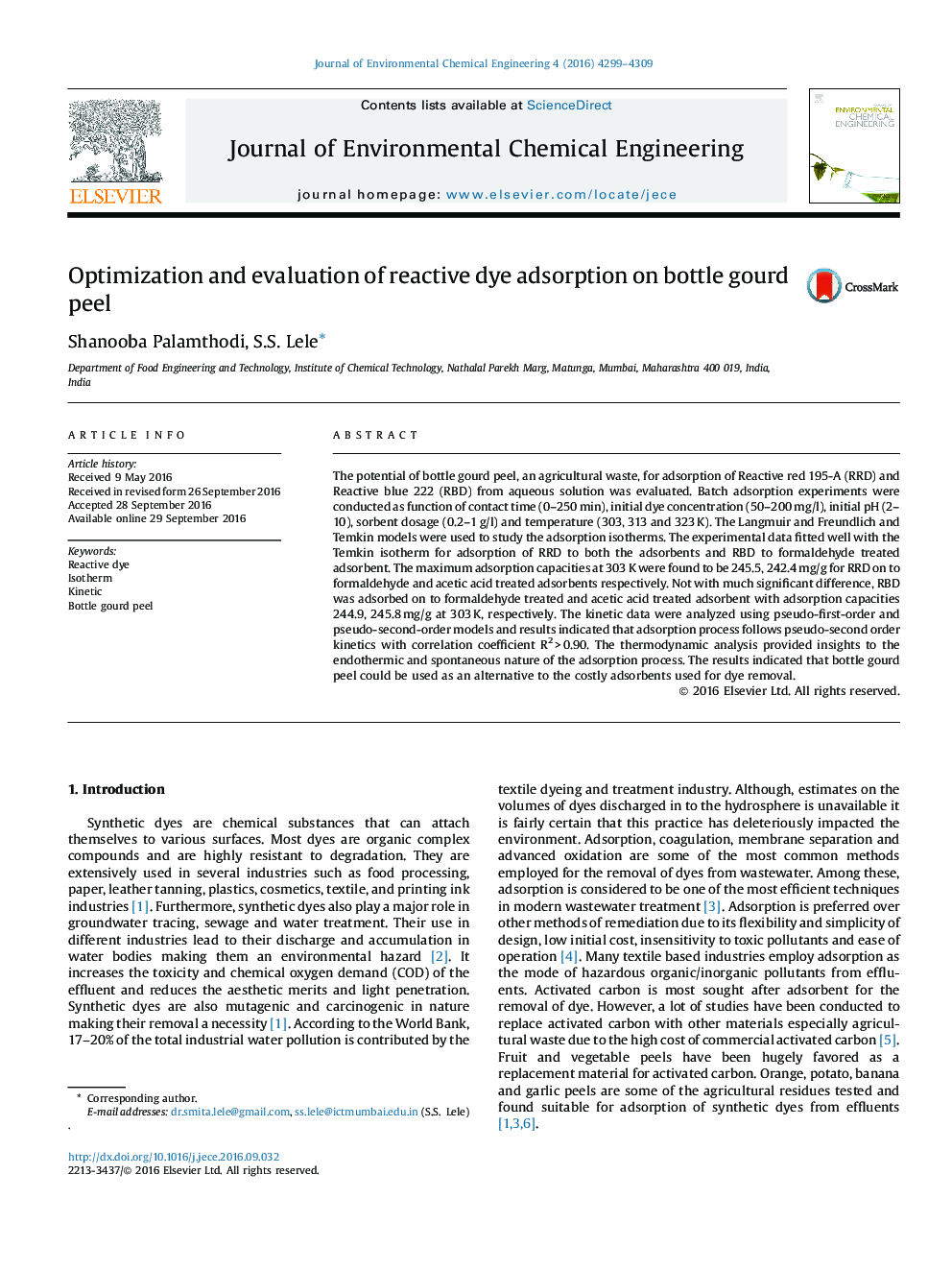| Article ID | Journal | Published Year | Pages | File Type |
|---|---|---|---|---|
| 4908602 | Journal of Environmental Chemical Engineering | 2016 | 11 Pages |
Abstract
The potential of bottle gourd peel, an agricultural waste, for adsorption of Reactive red 195-A (RRD) and Reactive blue 222 (RBD) from aqueous solution was evaluated. Batch adsorption experiments were conducted as function of contact time (0-250Â min), initial dye concentration (50-200Â mg/l), initial pH (2-10), sorbent dosage (0.2-1Â g/l) and temperature (303, 313 and 323Â K). The Langmuir and Freundlich and Temkin models were used to study the adsorption isotherms. The experimental data fitted well with the Temkin isotherm for adsorption of RRD to both the adsorbents and RBD to formaldehyde treated adsorbent. The maximum adsorption capacities at 303Â K were found to be 245.5, 242.4Â mg/g for RRD on to formaldehyde and acetic acid treated adsorbents respectively. Not with much significant difference, RBD was adsorbed on to formaldehyde treated and acetic acid treated adsorbent with adsorption capacities 244.9, 245.8Â mg/g at 303Â K, respectively. The kinetic data were analyzed using pseudo-first-order and pseudo-second-order models and results indicated that adsorption process follows pseudo-second order kinetics with correlation coefficient R2Â >Â 0.90. The thermodynamic analysis provided insights to the endothermic and spontaneous nature of the adsorption process. The results indicated that bottle gourd peel could be used as an alternative to the costly adsorbents used for dye removal.
Keywords
Related Topics
Physical Sciences and Engineering
Chemical Engineering
Chemical Engineering (General)
Authors
Shanooba Palamthodi, S.S. Lele,
